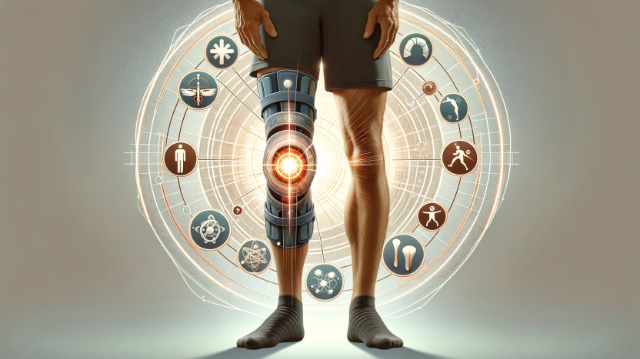News
Understanding ACL Ruptures and Non-Surgical Healing

The Problem with ACL Injuries
Anterior Cruciate Ligament (ACL) injuries are a common and often serious issue, especially for athletes and active individuals. Traditionally, the common belief was that a ruptured ACL has very limited capacity to heal on its own, leading to long–term limitations or the need for surgical intervention.
A New Perspective: The Cross Bracing Protocol
Recent research, however, is shedding light on a novel approach: the Cross Bracing Protocol (CBP). This non–surgical method offers a possible alternative for patients that may not be able to have surgery, can’t afford it, or are looking for non–surgical alternatives.
How Does the Cross Bracing Protocol Work?
The CBP involves immobilizing the knee at specific angles over time, using a brace. This position is maintained for a period, followed by a carefully managed rehabilitation process. This approach aims to reduce the gap between torn ACL tissues, facilitating natural healing.
Promising Outcomes with the CBP – But Caution Should Be Exercised With Interpretation Of The Results
Studies indicate that this method is surprisingly effective. A significant number of patients showed signs of ACL healing when managed with the CBP, as evidenced by MRI scans. These patients not only experienced ACL healing but also reported better knee function, quality of life, and a higher rate of returning to sports.
Key Takeaways from Recent Research
High Rate of Healing: A striking 90% of patients showed evidence of ACL healing following the CBP.
Improved Function and Quality of Life: Those with better healing outcomes reported higher scores in knee function and overall quality of life.
Return to Sports: A higher percentage were able to return to their pre–injury level of sports activity.
What This Means for You
If you or someone you know is facing an ACL injury, the Cross Bracing Protocol offers an alternative to surgery. It's crucial to consult with healthcare professionals who are familiar with this protocol and can guide you through the process.
This non–surgical method of treatment is still novel, and more clinical research is necessary. However, this study does offer an alternative that many patient and healthcare providers rarely considered, especially with the inclusion of this new bracing protocol.
Seeking Professional Guidance
Are you considering your options for ACL injury treatment? Contact us to learn more about the Cross Bracing Protocol and to see if it’s an option for you.
Chances are you’re going to need surgery, but this new research paper suggests there are alternatives to traditional treatment
Reference:
Disclaimer:
The information in the articles, posts, and newsfeed is intended for informational and educational purposes only and in no way should be taken to be the provision or practice of physical therapy, medical, or professional healthcare advice or services. The information should not be considered complete or exhaustive and should not be used for diagnostic or treatment purposes without first consulting with your physical therapist, occupational therapist, physician or other healthcare provider. The owners of this website accept no responsibility for the misuse of information contained within this website.
